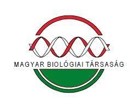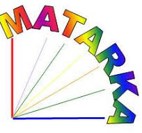Helyi és tájszerkezeti hatások alföldi gyepek madárközösségeire
Absztrakt
Az utóbbi időben számos mezőgazdasági területhez kötődő madárfaj állományában mutattak kijelentős csökkenést, mely a megváltozott mezőgazdasági gyakorlat következménye. Vizsgálatainkat az Alföld három régiójának intenzíven és extenzíven legeltetett gyepein végeztük. Célunk a legeltetési intenzitás, egy tájszerkezeti tényező és a régiók hatásainak vizsgálata a madarakon, továbbá a madarak két ökológiai csoportján (gyepi és nem gyepi madarak), valamint a mezei pacsirtán. Kimutattuk, hogy az intenzív legeltetés negatív hatással van a gyepi madarak faj- és egyedszámára, míg a nem gyepi madarakra nincsen hatással. Csak marginális tájszerkezeti hatást találtunk a madarak territóriumszámán. A mezei pacsirtán mindhárom vizsgált tényező hatását kimutattuk. Végül hangsúlyoznunk kell, hogy a hasonló vizsgálatoknak tájszerkezeti perspektívát is figyelembe kell venniük.
Hivatkozások
Batáry, R, Őrei, K. M., Báldi, A., Kleijn, D., Kisbenedek, T. & Erdős, S. (2007): Effects of local and landscape scale and cattle grazing intensity on Orthoptera assemblages of the Hungarian Great Plain. - Basic Appl. Ecol. 8: 280-290.
Báldi, A., Verhulst, J. & Kleijn, D. (2004): Eltérő intenzitással kezelt agrárterületek madárközösségeinek összehasonlítása. - Termvéd. Köziem. 11: 449-455.
Báldi, A., Batáry, P. & Erdős, S. (2005): Effects of grazing intensity on bird assemblages and populations of Hungarian grasslands. - Agr. Ecosyst. Environ. 108: 251-263.
Benton, T.G., Vickery, J.A. & Wilson, J.D. (2003): Farmland biodiversity: is habitat heterogeneity the key? - Trends Ecol. Evol. 18: 182-188.
Braschler, B. & Baur, B. (2005): Experimental small-scale grassland fragmentation alters competitive interactions among ant species. - Oecologia 143: 291-300.
Brotons, L., Wolff, A., Paulus, G., Martin, J.-L. (2005): Effect of adjacent agricultural habitat on the distribution of passerines in natural grasslands. - Biol. Conserv. 124: 407- 414.
Burfield, I. & van Bommel, F. (2004): Birds in Europe: population estimates, trends and conservation status. - BirdLife International, Cambridge, 374 pp.
Donald, P.F., Pisano, G., Rayment, M.D. & Pain, D.J. (2002): The Common Agricultural Policy, EU enlargements and the conservation of Europe’s farmland birds. -Agr. Ecosyst. Environ. 89: 167-182.
Fernández, G.J., Posse, G., Ferretti, V. & Gabelli, F.M. (2003): Bird-habitat relationship for the declining Pampas meadowlark populations in the southern Pampas grasslands. — Biol. Conserv. 115: 139-148.
Gregory, R.D., van Strien, A., Vorisek, P., Meyling, A.W.G., Noble, D.G., Foppen, R.P.B. & Gibbons, D.W. (2005): Developing indicators for European birds. - Philos. T. Roy. Soc. B. 360: 269-288.
Kleijn, D. & Sutherland, W.J. (2003): How effective are European agri-environment schemes in conserving and promoting biodiversity? - J. Appl. Ecol. 40: 947-969.
Maron, M. & Lili, A. (2005): The influence of livestock grazing and weed invasion on habitat use by birds in grassy woodland remnants. - Biol. Conserv. 124: 439-450.
Moreira, F., Beja, R, Morgado, R., Reino, L., Gordinho, L., Delgado, A. & Borralho, R. (2005): Effects of field management and landscape context on grassland wintering birds in Southern Portugal. Agr. — Ecosyst. Environ. 109: 59-74.
Tscharntke, T, Klein, A.M., Kruess, A., Steffan-Dewenter, I. & Thies, C. (2005): Landscape perspectives on agricultural intensification and biodiversity — ecosystem service management. - Ecol. Lett. 8: 857-874.
Vickery, J.A., Tallowin, J.R., Feber, R.E., Asteraki, E.J., Atkinson, P.W., Fuller, R.J. & Brown, V.K. (2001): The management of lowland neutral grasslands in Britain: effects of agricultural practices on birds and their food resources. - J. Appl. Ecol. 38: 647-664.
Virkkala, R., Luoto, M. & Rainio, K. (2004): Effects of landscape composition on farmland and red-listed birds in boreal agricultural-forest mosaics. - Ecography 27: 273-284.






